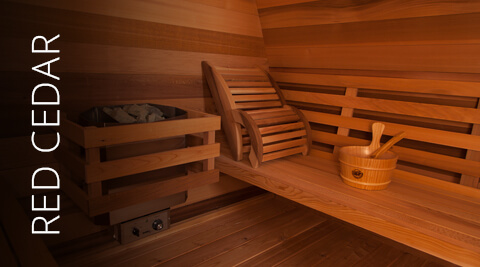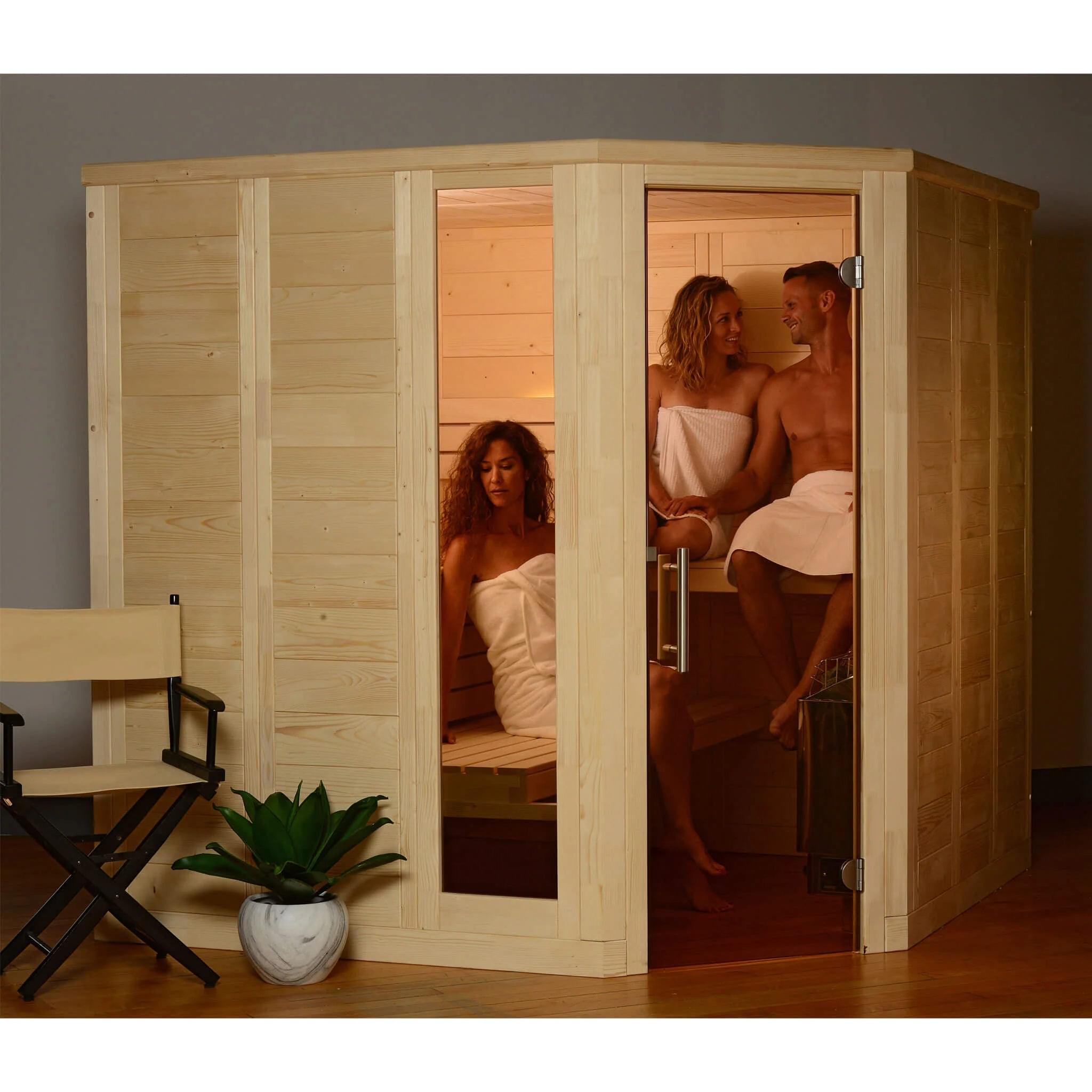Not known Details About Traditional Sauna
Not known Details About Traditional Sauna
Blog Article
The 15-Second Trick For Traditional Sauna
Table of ContentsHow Traditional Sauna can Save You Time, Stress, and Money.Examine This Report about Traditional SaunaThe Ultimate Guide To Traditional SaunaRumored Buzz on Traditional Sauna
The majority of the weight shed in a sauna is water loss and is re-gained upon rehydrating. Nonetheless, certainly sauna can be a vital part of a healthy weight management program. To check out the differences in between typical and IR saunas, I will divide these right into verifiable, academic, and fabricated differences.Thus, the hottest factor in the saunawhich goes to the ceiling straight above the sauna heateris typically in between 185 and 190 F. Traditional Sauna. Claims that a traditional sauna exceeds 200 F is just not real and not suitable for electrical saunas marketed in the US. The temperature for a far-infrared sauna is usually set in between 120 and 140 F; however, unlike the typical sauna, the objective in and IR area is not to achieve a high temperature level
Because of this, the temperature difference is practically unnecessary, considering that extreme sweating leads to both sauna kinds, yet the approach of warming the body is various. In an IR sauna the bather will certainly feel hot and will sweat profusely, but at much lower temperature levels. Hence, if the objective is to invest longer periods of time in the sauna, the IR sauna is a great selection.

More About Traditional Sauna
When the heat is attained, the aspects cycle on and off to preserve the high temperature level. Many typical sauna individuals enjoy putting water over the rocks to produce steam to raise sauna moisture degrees. The benefits of putting water over the rocks consist of: making the space extra comfortable, dampening the nasal passages, and enabling the use of aromatherapy by mixing important oils with the water.
In a far-infrared sauna, the warm front pass through the body to properly heat the body and elevate the body core temperature level. To attain this boosted temperature level, Far-infrared emitters develop infrared energy which is close to the very same wavelength as that which the body naturally emitsoften referred to as the "Essential Array" of 7 to 14 microns), so the energy is well obtained by the body.
When the power gets in the body, it triggers the body temperature to increase and inevitably leads to perspiration. In an infrared sauna it is essential for the emitters/heaters to continue to be on almost constantly. Since there is no mass of rocks to maintain warm, the sauna will certainly cool down Get the facts if the emitters shut down.
As discussed over, the sauna bather in an infrared space wishes to position himself before running emitters to obtain optimal gain from the warmth. The home heating time for the two spaces can be very different, depending on how the rooms are used. For a conventional sauna, a bather ought to permit 30-40 minutes for the space to achieve a desired temperature and to appropriately pre-heat the rocks.
Traditional Sauna Can Be Fun For Everyone
A well created sauna will commonly accomplish a temperature level of 150-160 F in regarding 30-40 mins. For hotter temperature levels, the area may need to warm for a longer duration.
To some, 15 minutes was "wasted" while the infrared energy warmed the timber panels as opposed to warming a body, my response while others find a pre-heated space to be more comfortable and believe an elevated beginning temperature level is required to begin perspiring. The size of recommended usage for every space is about the same (10-15 minutes per session); however, as a result of the lower air temperatures and the capacity to feel the results of infrared heat much faster than a typical sauna, it is not uncommon for a person to spend a total of 20-30 mins in an infrared sauna.
Traditional saunas have a tendency to be bigger (hence utilize more electrical energy) than infrared saunas, although standard saunas are certainly available in one and 2 individual dimensions as well. For a two-person standard sauna, 5x6 or 5x7 size is most preferred. The leading bench can conveniently seat 2 or 3 people and is likewise long sufficient to exist down throughout the sauna session.


The ordinary cost per kWH of power in the U.S. is roughly $0.11, so a 4.5 kW heating system will cost around $.50 to run for one hour, if the heating unit runs constantly for one hour. Generally a sauna heater will compete 75% of the first hour and 50% of subsequent hours on given that the aspects cycle once the established temperature is accomplished.
Get This Report on Traditional Sauna
A two individual far-infrared area is generally literally smaller than a conventional sauna, usually about 4' x 4' or smaller. The IR furnace is typically 1.5-1.7 kW utilizing a 120 volt 15 amp plug-in service. Given that the space can be made use of sooner than a sauna space, we will assume the room is utilized for to of an hour consisting of warm up time.
There is a rarely reviewed difference in the social experience between the two rooms. While our culture has lost several of the social advantage of the try here conventional sauna experience, it can be really socially fulfilling. From family members time in the sauna, to heart-felt conversations with loved ones, to sauna partiesthe traditional sauna experience can bring about intimate interacting socially.
Most higher end infrared spaces consist of tinted light treatment, noise systems and full-glass fronts.
Report this page